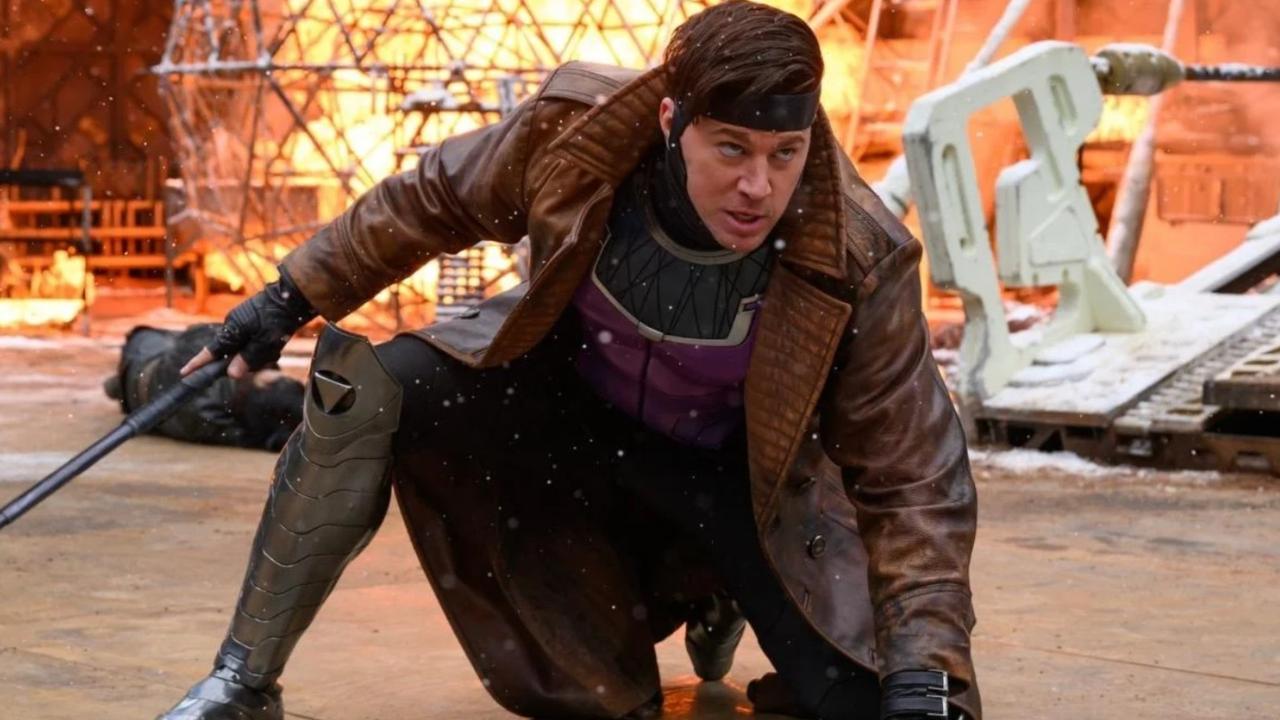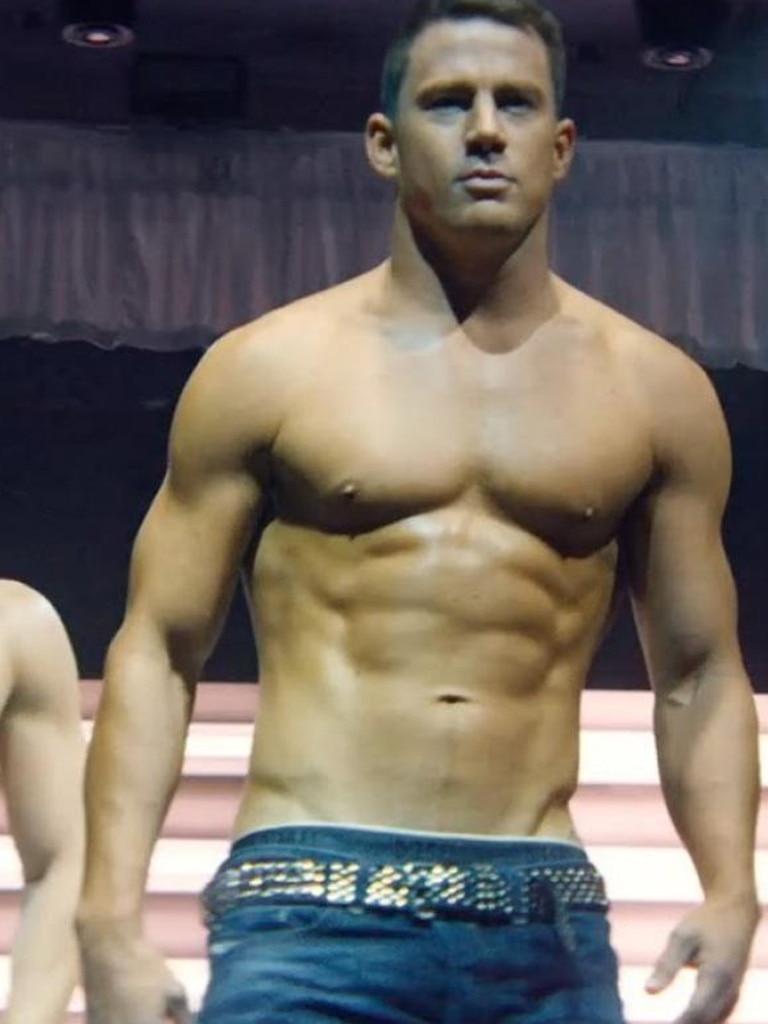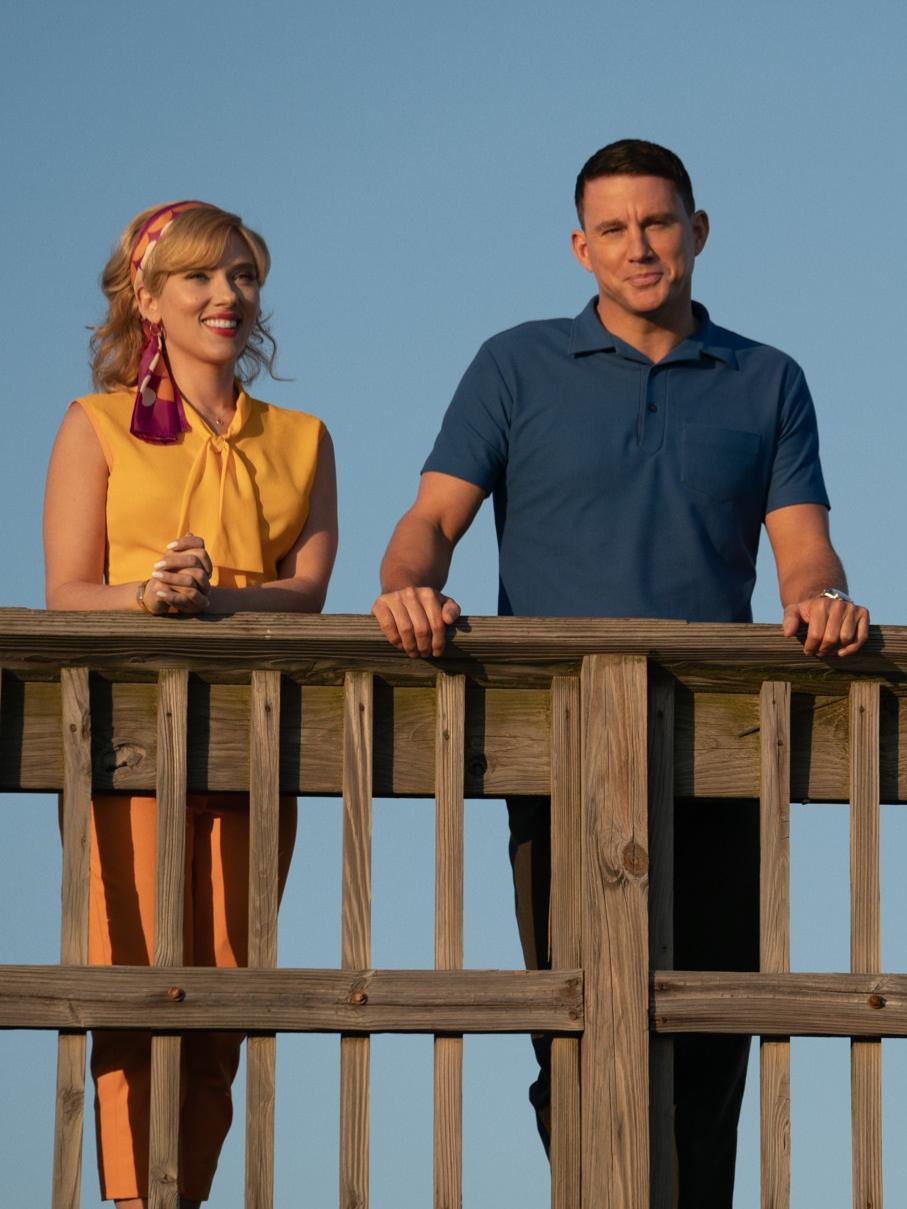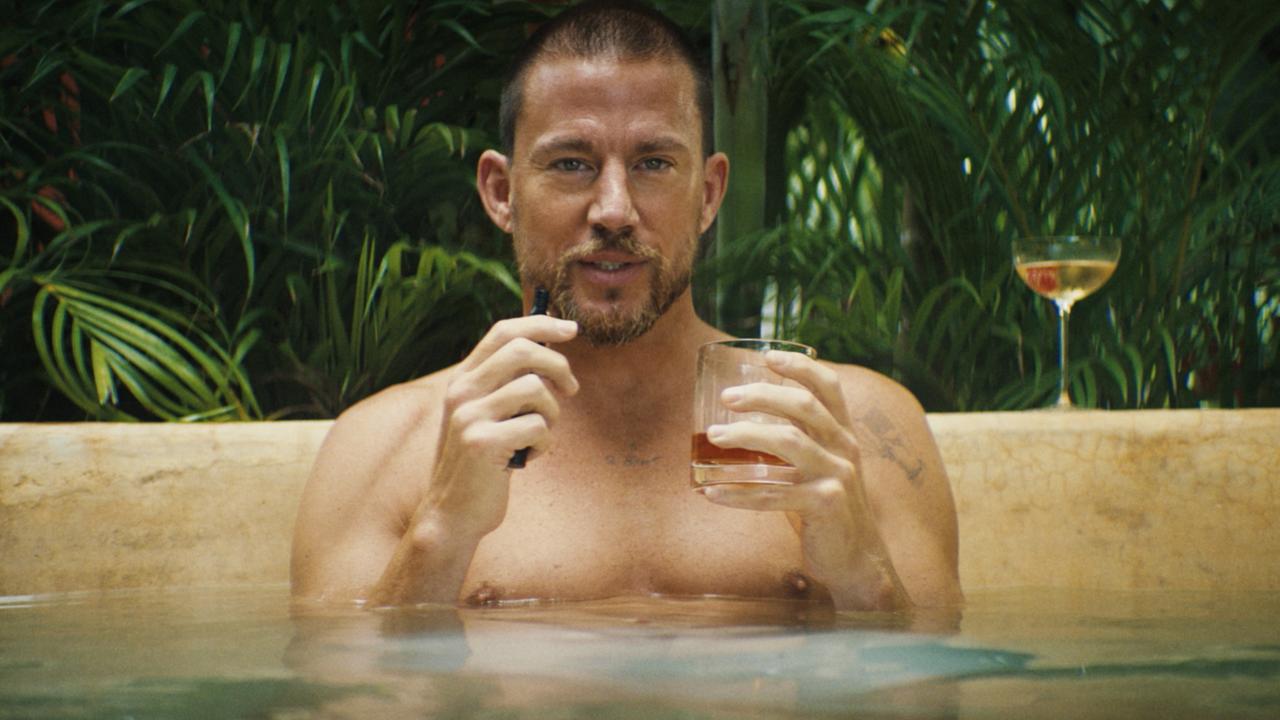
This article is more than
1 year oldWhere did it go wrong for Channing Tatum?

Once one of Hollywood’s most bankable leading men, Channing Tatum is suffering through a string of box office flops. What happened?
There was a time, back when moviegoing first started to emerge from the pre-vaccine year of the pandemic, that Channing Tatum seemed to be emerging as one of our last true movie stars.
After a series of Steven Soderbergh movies and smaller roles for directors like Quentin Tarantino and the Coen Brothers, Tatum dropped back into cinemas by way of a cameo in the first “original”-ish hit of the first post-vaccine season (Free Guy), and co-starred with Sandra Bullock in the decidedly old-fashioned hit The Lost City. In between these hits was perhaps his truest test as a star: He appeared in a movie simply called Dog, which he co-directed; is mainly composed of scenes between him and, yes, a dog; and betrays a surprising amount of Soderbergh influence. And that movie made $US61 million at the US box office. Yes, people love dogs, but there plenty of much-hyped sequels and Oscar hopefuls that couldn’t match this.
A few years on, it would seem like another Year of Tatum is upon us: He’s starring in a romantic comedy pairing him with another star, and an actor-directed movie, with a cameo in another Ryan Reynolds-fronted summer blockbuster.

Yet something feels off this time. Fly Me to the Moon, his star-driven rom-com, outright bombed, and Blink Twice, his dark thriller for current romantic partner Zoë Kravitz, appears poised to do middling box office business (albeit with him not playing the central, point-of-view character).
Somehow, the bright spot is shaping up to be what was supposed to be an inside joke: Deadpool & Wolverine let him finally play Gambit, the Cajun-accented mutant from theX-Men series, a role Tatum had been planning to play for years before the Fox acquisition of Disney finally shut it down for good.
Tatum is a genuine bright spot in Deadpool & Wolverine. He’s clearly having fun dressing up as Gambit, and at the same time, pokes fun at himself with a mush-mouthed Cajun accent – in that sense, it’s a classic Tatum performance, in that it draws upon his physicality as a genuinely handsome and tough-looking guy, and also allows him to lean into what’s goofiest about him.
It’s the combination that fuels his performances in his two major film series so far: 21 Jump Street, where he goes more for comedy, and Magic Mike, where he goes more for the physicality. He’s charming in Fly Me to the Moon, but the movie’s gentleness also straitjackets him, giving him neither the broadest comedy nor the opportunity to really dance or fight with gusto (literally or figuratively).


Then again, Magic Mike’s Last Dance wasn’t particularly big, either, despite a familiar character jumping into a sexy version of an old-fashioned put-on-a-show story. So has Tatum simply had his time in the spotlight? Have audiences moved on? Even if they have, he’ll be fine. He’s well-liked, well-known, and has solid taste. But there may be something else at work here – something else that connects to his Deadpool & Wolverine role.
Call it the endless series of cameo-trading that’s gone on for nearly a decade now among some of the biggest remaining movie stars. In 2018, Deadpool 2 goofed on its inability to “afford” bigger-name X-Men, while actually scoring appearances from both Matt Damon and Brad Pitt. Damon had just appeared in a similar capacity in Thor: Ragnarok. In 2019, the Fast & Furious spin-off Hobbs & Shaw ground to a halt for extended cameos from Kevin Hart and Ryan Reynolds. Reynolds also jumped into the Chris Evans/Ana de Armas vehicle Ghosted and the Brad Pitt vehicle Bullet Train, while Tatum did Free Guy. Pitt took a small part in The Lost City and Damon turned up again in the next Thor.

Many of these surprise appearances are amusing, and the looseness with which these big stars perform walk-ons may even originate with Tatum’s pal Soderbergh, who has also worked with Damon and Pitt. It shows a lack of ultra-managed movie-star fussiness – a way of proving humility while maintaining mystique. (Better to get a crowd oohing and ahhing over a brief big-screen appearance than expecting you to star in a TV show.)
Yet maybe they also create a feeling of accessibility more akin to social media than cinema; what are these cameos if not social-friendly, TikTok-length bites, rather than full-on movie-star performances? Why would a movie with Sandra Bullock and Channing Tatum even need Brad Pitt? Isn’t that like having Steven Spielberg co-direct with Martin Scorsese? Doesn’t it mostly get in the way, even if something cool happens because of it?
There’s something particularly diminishing about Tatum shrinking his Gambit dream down to a supporting-joke size to help glorify a new Ryan Reynolds project. It’s almost as if the movie is saying: Don’t worry, you don’t need to seek out Channing Tatum in other movies. Eventually, everyone comes home to the big-ticket movies you already want to see!
With Dog, audiences realised that just watching a movie star play a relatable character opposite a dog could be plenty. This newest brand of superstar cameo invert that specialness, making big stars seem like branded cogs.
This story originally appeared on Decider and is republished here with permission.




